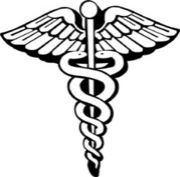此間たまたま見つけた記事。2005年のものですが、妊娠中の皮膚病について
とてもわかりやすく書かれているので載せてみました。
皮膚科の単語って、どう訳せばいいのか 以前に、英語での表現が
あまり上手くできませんが ><;
ちょっと復習してからまたトピに追加しようかと思ってます。ちなみに皮膚科や内科の先生は、Fitzpatrick's Color Atlas & Synopsis of Clinical Dermatology を薦めておりました。最初か最後のの数ページにPapule, Macule, Abrasion 云々など、皮膚の状態を表す表現が説明されてます。
http://
American Family Physician
Photo Quiz
Pruritic Rash During Pregnancy
A 32-year-old pregnant woman, gravida one, para zero, at an estimated 32 weeks of gestation, complained of several weeks of a progressively worsening, "itchy” rash on her back. She denied having a similar rash before this pregnancy. She felt fine otherwise and had no other complaints.
Physical examination revealed follicular, erythematous papules and pustules scattered evenly across her back and shoulders (see accompanying figure). The central chest was mildly involved. There was no predilection for striae or intertriginous areas, and the abdomen and genitalia were spared. No oral mucosal lesions were noted.
Question
Given the history and physical examination, which one of the following is the most likely diagnosis?
A. Pruritic urticarial papules and plaques of pregnancy.
B. Pruritic folliculitis of pregnancy.
C. Pruritus gravidarum.
D. Prurigo of pregnancy.
E. Pemphigoid gestationis.
Discussion
The correct answer is B: Pruritic folliculitis of pregnancy. This rare dermatosis occurs in the second and third trimester of pregnancy. It affects an estimated one in 3,000 pregnancies.1 Underreporting is probably common because it may be mistaken for acne or microbial folliculitis.2,3 It is characterized by an acneiform eruption consisting of multiple, pruritic, 2- to 4-mm, follicular papules or pustules typically on the shoulders, upper back, arms, chest, and abdomen. The diagnosis is made clinically after excluding other, more common rashes. The rash usually resolves spontaneously one to two months following delivery.
The exact etiology of pruritic folliculitis is unknown. Small case series have failed to implicate immunologic dysfunction or elevated androgen levels.4-7 On histopathology, an acute sterile folliculitis is evident and direct immunofluorescence stains are negative. The disorder is not associated with maternal or fetal morbidity, although one small series of patients showed a reduction in fetal birth weight.7 Treatment is similar to that of mild acne, consisting of topical benzoyl peroxide. Antihistamines and topical hydrocortisone may be used if severe pruritus exists.
Pruritic urticarial papules and plaques of pregnancy (PUPPP), also known as polymorphic eruption of pregnancy, is the most common dermatosis of pregnancy, occurring in up to one in 160 pregnancies with an increased incidence in multiple gestations.8 It usually occurs in primigravidas in the third trimester and recurrence in subsequent pregnancies is unusual.5 The rash may first appear postpartum. PUPPP typically has a marked pruritic component, the onset of which coincides with the skin lesions. The rash usually begins over the abdomen, commonly involving the striae gravidarum, and may spread to the breasts, upper thighs, and arms. The face, palms, soles, and mucosal surfaces usually are spared. As the name implies, the lesions typically consist of polymorphous, erythematous, nonfollicular papules, plaques, and sometimes vesicles. The lesions can be painful. The rash usually resolves near term or in the early postpartum period.8 Topical emollients and moderately potent steroids in combination with oral antihistamines usually provide some symptomatic relief.
Selected Differential Diagnosis of Pruritus and Rash in Pregnancy
--------------------------------------------------------------------------------
Condition
Characteristics
Pruritic urticarial papules and plaques of pregnancy
Papules and plaques often start in stria; occurs in third trimester
Pruritic folliculitis
of pregnancy
2- to 4-mm follicular papules and pustules; occurs in second or third trimester
Pruritus gravidarum
No rash; occurs in first trimester
Prurigo of pregnancy
Papules and nodules on extensor surfaces; occurs in any trimester
Pemphigoid gestationis (herpes gestationis)
Vesicles and bullae; occurs in second and third trimesters
Pruritus gravidarum is a poorly defined condition of pregnancy associated with itching without an obvious dermatosis. The term pruritus gravidarum is classically associated with pruritus in the first trimester. Its etiology and incidence are unknown. The symptoms of pruritus gravidarum usually can be relieved by emollients and antihistamines. It is not clear whether this condition is associated with another more well-defined condition known as intrahepatic cholestasis of pregnancy (ICP),6 but the terms often are used interchangeably in the literature.1 ICP, also called obstetric cholestasis,8 usually presents in the third rather than the first trimester and is the most common liver disorder unique to pregnancy.9 Unrelenting pruritus, abnormal liver function tests in the absence of viral or drug-induced hepatitis, and elevated serum cholic acid are highly suggestive of ICP, with jaundice present in 10 to 15 percent of patients. ICP is associated with poor fetal outcomes including fetal distress, spontaneous preterm delivery, and fetal death and, as such, induction of labor may be warranted.9
Prurigo of pregnancy occurs in approximately one in 300 pregnancies.6 It is characterized by pruritic, often excoriated papules and nodules on the extensor surfaces of the legs and upper arms. The abdomen also may be involved. Onset is variable and has been reported to occur in all trimesters. The etiology and pathogenesis are unknown, although there is sometimes a history of atopy.8 The histopathologic findings of spongiosis, parakeratosis, and marked papillary dermal edema are similar to those occurring in PUPPP. Symptomatic treatment consists of topical steroids, emollients, and oral antihistamines, and resolution typically occurs postpartum.6
Pemphigoid gestationis (formerly herpes gestationis), a rare autoimmune disorder occurring in approximately one in 50,000 pregnancies, begins in the second or third trimester.10 A viral-like prodrome may precede intensely pruritic urticarial lesions on the abdomen. The rash initially may resemble PUPPP, but within a few days, vesicles and tense bullae on erythematous bases usually develop. Periumbilical involvement is characteristic. The condition may resolve late in pregnancy, but classically flares up again at delivery.10 There is an association with prematurity and low birth weight, consistent with mild placental insufficiency.6,8 Treatment does not appear to affect the fetal outcome.6,10 Symptomatic treatment consists of potent topical steroids for mild cases and systemic oral steroids for more severe cases. Affected patients may have nongestational recurrences triggered by oral contraceptives and menstrual cycles.6
john walters, lcdr, mc, usnr
dwayne c. clark, cdr, mc, usn
Naval Hospital Jacksonville
2080 Child St.
Jacksonville, FL 32214
The opinions and assertions contained herein are the private views of the authors and are not to be construed as official or as reflecting the views of the U.S. Navy Medical Department or the U.S. Naval Service at large.
references
1. Roger D, Vaillant L, Fignon A, Pierre F, Bacq Y, Brechot JF, et al. Specific pruritic diseases of pregnancy. A prospective study of 3192 pregnant women. Arch Dermatol 1994;130:734-9.
2. Kroumpouzos G, Cohen LM. Pruritic folliculitis of pregnancy. J Am Acad Dermatol 2000;43(1 pt 1):132-4.
3. Fox GN. Pruritic folliculitis of pregnancy. Am Fam Physician 1989;39:189-93.
4. Zoberman E, Farmer ER. Pruritic folliculitis of pregnancy. Arch Dermatol 1981;117:20-2.
5. Wilkinson SM, Buckler H, Wilkinson N, O'Driscoll J, Roberts MM. Androgen levels in pruritic folliculitis of pregnancy. Clin Exp Dermatol 1995;20:234-6.
6. Kroumpouzos G, Cohen LM. Dermatoses of pregnancy. J Am Acad Dermatol 2001;45:1-19.
7. Vaughan Jones SA, Hern S, Nelson-Piercy C, Seed PT, Black MM. A prospective study of 200 women with dermatoses of pregnancy correlating clinical findings with hormonal and immunopathological profiles. Br J Dermatol 1999;141:71-81.
8. Vaughan Jones SA, Black MM. Pregnancy dermatoses. J Am Acad Dermatol 1999;40(2 pt 1):233-41.
9. Fagan EA. Intrahepatic cholestasis of pregnancy. Clin Liver Dis 1999;3:603-32.
10. Engineer L, Bhol K, Ahmed AR. Pemphigoid gestationis: a review. Am J Obstet Gynecol 2000;183:483-91.
The editors of AFP welcome submission of photographs and material for the Photo Quiz department. Contributing editor is Dan Stulberg, M.D. Send photograph and discussion to Monica Preboth, AFP Editorial, 11400 Tomahawk Creek Pkwy., Leawood, KS 66211-2672 (e-mail: mpreboth@aafp.org).
--------------------------------------------------------------------------------
Copyright © 2005 by the American Academy of Family Physicians.
This content is owned by the AAFP. A person viewing it online may make one printout of the material and may use that printout only for his or her personal, non-commercial reference. This material may not otherwise be downloaded, copied, printed, stored, transmitted or reproduced in any medium, whether now known or later invented, except as authorized in writing by the AAFP. Contact afpserv@aafp.org for copyright questions and/or permission requests.
とてもわかりやすく書かれているので載せてみました。
皮膚科の単語って、どう訳せばいいのか 以前に、英語での表現が
あまり上手くできませんが ><;
ちょっと復習してからまたトピに追加しようかと思ってます。ちなみに皮膚科や内科の先生は、Fitzpatrick's Color Atlas & Synopsis of Clinical Dermatology を薦めておりました。最初か最後のの数ページにPapule, Macule, Abrasion 云々など、皮膚の状態を表す表現が説明されてます。
http://
American Family Physician
Photo Quiz
Pruritic Rash During Pregnancy
A 32-year-old pregnant woman, gravida one, para zero, at an estimated 32 weeks of gestation, complained of several weeks of a progressively worsening, "itchy” rash on her back. She denied having a similar rash before this pregnancy. She felt fine otherwise and had no other complaints.
Physical examination revealed follicular, erythematous papules and pustules scattered evenly across her back and shoulders (see accompanying figure). The central chest was mildly involved. There was no predilection for striae or intertriginous areas, and the abdomen and genitalia were spared. No oral mucosal lesions were noted.
Question
Given the history and physical examination, which one of the following is the most likely diagnosis?
A. Pruritic urticarial papules and plaques of pregnancy.
B. Pruritic folliculitis of pregnancy.
C. Pruritus gravidarum.
D. Prurigo of pregnancy.
E. Pemphigoid gestationis.
Discussion
The correct answer is B: Pruritic folliculitis of pregnancy. This rare dermatosis occurs in the second and third trimester of pregnancy. It affects an estimated one in 3,000 pregnancies.1 Underreporting is probably common because it may be mistaken for acne or microbial folliculitis.2,3 It is characterized by an acneiform eruption consisting of multiple, pruritic, 2- to 4-mm, follicular papules or pustules typically on the shoulders, upper back, arms, chest, and abdomen. The diagnosis is made clinically after excluding other, more common rashes. The rash usually resolves spontaneously one to two months following delivery.
The exact etiology of pruritic folliculitis is unknown. Small case series have failed to implicate immunologic dysfunction or elevated androgen levels.4-7 On histopathology, an acute sterile folliculitis is evident and direct immunofluorescence stains are negative. The disorder is not associated with maternal or fetal morbidity, although one small series of patients showed a reduction in fetal birth weight.7 Treatment is similar to that of mild acne, consisting of topical benzoyl peroxide. Antihistamines and topical hydrocortisone may be used if severe pruritus exists.
Pruritic urticarial papules and plaques of pregnancy (PUPPP), also known as polymorphic eruption of pregnancy, is the most common dermatosis of pregnancy, occurring in up to one in 160 pregnancies with an increased incidence in multiple gestations.8 It usually occurs in primigravidas in the third trimester and recurrence in subsequent pregnancies is unusual.5 The rash may first appear postpartum. PUPPP typically has a marked pruritic component, the onset of which coincides with the skin lesions. The rash usually begins over the abdomen, commonly involving the striae gravidarum, and may spread to the breasts, upper thighs, and arms. The face, palms, soles, and mucosal surfaces usually are spared. As the name implies, the lesions typically consist of polymorphous, erythematous, nonfollicular papules, plaques, and sometimes vesicles. The lesions can be painful. The rash usually resolves near term or in the early postpartum period.8 Topical emollients and moderately potent steroids in combination with oral antihistamines usually provide some symptomatic relief.
Selected Differential Diagnosis of Pruritus and Rash in Pregnancy
--------------------------------------------------------------------------------
Condition
Characteristics
Pruritic urticarial papules and plaques of pregnancy
Papules and plaques often start in stria; occurs in third trimester
Pruritic folliculitis
of pregnancy
2- to 4-mm follicular papules and pustules; occurs in second or third trimester
Pruritus gravidarum
No rash; occurs in first trimester
Prurigo of pregnancy
Papules and nodules on extensor surfaces; occurs in any trimester
Pemphigoid gestationis (herpes gestationis)
Vesicles and bullae; occurs in second and third trimesters
Pruritus gravidarum is a poorly defined condition of pregnancy associated with itching without an obvious dermatosis. The term pruritus gravidarum is classically associated with pruritus in the first trimester. Its etiology and incidence are unknown. The symptoms of pruritus gravidarum usually can be relieved by emollients and antihistamines. It is not clear whether this condition is associated with another more well-defined condition known as intrahepatic cholestasis of pregnancy (ICP),6 but the terms often are used interchangeably in the literature.1 ICP, also called obstetric cholestasis,8 usually presents in the third rather than the first trimester and is the most common liver disorder unique to pregnancy.9 Unrelenting pruritus, abnormal liver function tests in the absence of viral or drug-induced hepatitis, and elevated serum cholic acid are highly suggestive of ICP, with jaundice present in 10 to 15 percent of patients. ICP is associated with poor fetal outcomes including fetal distress, spontaneous preterm delivery, and fetal death and, as such, induction of labor may be warranted.9
Prurigo of pregnancy occurs in approximately one in 300 pregnancies.6 It is characterized by pruritic, often excoriated papules and nodules on the extensor surfaces of the legs and upper arms. The abdomen also may be involved. Onset is variable and has been reported to occur in all trimesters. The etiology and pathogenesis are unknown, although there is sometimes a history of atopy.8 The histopathologic findings of spongiosis, parakeratosis, and marked papillary dermal edema are similar to those occurring in PUPPP. Symptomatic treatment consists of topical steroids, emollients, and oral antihistamines, and resolution typically occurs postpartum.6
Pemphigoid gestationis (formerly herpes gestationis), a rare autoimmune disorder occurring in approximately one in 50,000 pregnancies, begins in the second or third trimester.10 A viral-like prodrome may precede intensely pruritic urticarial lesions on the abdomen. The rash initially may resemble PUPPP, but within a few days, vesicles and tense bullae on erythematous bases usually develop. Periumbilical involvement is characteristic. The condition may resolve late in pregnancy, but classically flares up again at delivery.10 There is an association with prematurity and low birth weight, consistent with mild placental insufficiency.6,8 Treatment does not appear to affect the fetal outcome.6,10 Symptomatic treatment consists of potent topical steroids for mild cases and systemic oral steroids for more severe cases. Affected patients may have nongestational recurrences triggered by oral contraceptives and menstrual cycles.6
john walters, lcdr, mc, usnr
dwayne c. clark, cdr, mc, usn
Naval Hospital Jacksonville
2080 Child St.
Jacksonville, FL 32214
The opinions and assertions contained herein are the private views of the authors and are not to be construed as official or as reflecting the views of the U.S. Navy Medical Department or the U.S. Naval Service at large.
references
1. Roger D, Vaillant L, Fignon A, Pierre F, Bacq Y, Brechot JF, et al. Specific pruritic diseases of pregnancy. A prospective study of 3192 pregnant women. Arch Dermatol 1994;130:734-9.
2. Kroumpouzos G, Cohen LM. Pruritic folliculitis of pregnancy. J Am Acad Dermatol 2000;43(1 pt 1):132-4.
3. Fox GN. Pruritic folliculitis of pregnancy. Am Fam Physician 1989;39:189-93.
4. Zoberman E, Farmer ER. Pruritic folliculitis of pregnancy. Arch Dermatol 1981;117:20-2.
5. Wilkinson SM, Buckler H, Wilkinson N, O'Driscoll J, Roberts MM. Androgen levels in pruritic folliculitis of pregnancy. Clin Exp Dermatol 1995;20:234-6.
6. Kroumpouzos G, Cohen LM. Dermatoses of pregnancy. J Am Acad Dermatol 2001;45:1-19.
7. Vaughan Jones SA, Hern S, Nelson-Piercy C, Seed PT, Black MM. A prospective study of 200 women with dermatoses of pregnancy correlating clinical findings with hormonal and immunopathological profiles. Br J Dermatol 1999;141:71-81.
8. Vaughan Jones SA, Black MM. Pregnancy dermatoses. J Am Acad Dermatol 1999;40(2 pt 1):233-41.
9. Fagan EA. Intrahepatic cholestasis of pregnancy. Clin Liver Dis 1999;3:603-32.
10. Engineer L, Bhol K, Ahmed AR. Pemphigoid gestationis: a review. Am J Obstet Gynecol 2000;183:483-91.
The editors of AFP welcome submission of photographs and material for the Photo Quiz department. Contributing editor is Dan Stulberg, M.D. Send photograph and discussion to Monica Preboth, AFP Editorial, 11400 Tomahawk Creek Pkwy., Leawood, KS 66211-2672 (e-mail: mpreboth@aafp.org).
--------------------------------------------------------------------------------
Copyright © 2005 by the American Academy of Family Physicians.
This content is owned by the AAFP. A person viewing it online may make one printout of the material and may use that printout only for his or her personal, non-commercial reference. This material may not otherwise be downloaded, copied, printed, stored, transmitted or reproduced in any medium, whether now known or later invented, except as authorized in writing by the AAFP. Contact afpserv@aafp.org for copyright questions and/or permission requests.
|
|
|
|
コメント(8)
>皮膚科の単語って、どう訳せばいいのか 以前に、英語での表現が
あまり上手くできませんが ><;
3ヶ月もたちましたけれど。ちょっとまとめて。。
皮膚科的に話そうとすれば、下記の用語が使えます。
Macule (Latin: macula, "spot")
Papule (Latin: papula, "pimple")
Plaques (French: plaque, "plate").
Lichenification
Nodule (Latin: nodulus, "small knot")
Wheal
Vesicle-Bulla (Blister) (Latin: vesicula, "little bladder"; bulla, "bubble")
Pustule (Latin: pustula, "pustule")
Crusts (Latin: crusta, "rind, bark, shell")
Scales (squames) (Latin: squama, "scale")
Erosion
Ulcer (Latin: ulcus, "sore")
Scar
Atrophy
Cyst
Source(資料): Fitzpaatrick's Color Atlas & Synopsis of Clinical Dermatology 5th ed
あまり上手くできませんが ><;
3ヶ月もたちましたけれど。ちょっとまとめて。。
皮膚科的に話そうとすれば、下記の用語が使えます。
Macule (Latin: macula, "spot")
Papule (Latin: papula, "pimple")
Plaques (French: plaque, "plate").
Lichenification
Nodule (Latin: nodulus, "small knot")
Wheal
Vesicle-Bulla (Blister) (Latin: vesicula, "little bladder"; bulla, "bubble")
Pustule (Latin: pustula, "pustule")
Crusts (Latin: crusta, "rind, bark, shell")
Scales (squames) (Latin: squama, "scale")
Erosion
Ulcer (Latin: ulcus, "sore")
Scar
Atrophy
Cyst
Source(資料): Fitzpaatrick's Color Atlas & Synopsis of Clinical Dermatology 5th ed
Macule、Papule、Plaque
Macule:(直径1センチ以下の)あざ、斑点;直径1センチ以上は、Patch とも呼ばれるらしい (ちなみにPatchは、古代フランス語で、Pieche、英語のPiece [一切れ、枚]と関係がある;Etymonline.comより)
Maculeは、平たくって、触ったときの感覚は、周りの皮膚とほぼ一緒。色が違うのみ。
Papule:丘疹(きゅうしん)
部分が(山のように)腫れ上がっている部分。ニキビを想像して下さい。
Plaque:プラーク
「プラークって、Plaqueをカタカナ読みにしただけやんけ〜(苦笑)」って思ったのですが、Plaqueも、Papuleと同じように、触ったとき、腫れ上がっている点、平たいMaculeとは違います。Papue=山形の腫れ上がり、に対し、Plaque=平たい丘方の腫れ上がり。
資料Source:
http://www.medo.jp/cgi-bin/je.cgi
http://courses.washington.edu/hubio567/lang/macule.html
http://dic.yahoo.co.jp/dsearch?dtype=2&p=%C8%C3%C5%C0
http://www.etymonline.com/index.php?search=patch&searchmode=none
http://www.nlm.nih.gov/medlineplus/ency/imagepages/2538.htm
http://missinglink.ucsf.edu/lm/DermatologyGlossary/primarylesions1a.html
http://www.psoriasis.org/about/psoriasis/plaque.php
写真:
左から Macule、Papule、Plaque
Plaqueは、乾癬。例を言えば。。乾癬を描写するときは、Salmon colored plaque with silvery scale (鮭色[ピンク]のプラークの上に銀色のうろこ)、またはそれに似た表現が使われるそうです。
Macule:(直径1センチ以下の)あざ、斑点;直径1センチ以上は、Patch とも呼ばれるらしい (ちなみにPatchは、古代フランス語で、Pieche、英語のPiece [一切れ、枚]と関係がある;Etymonline.comより)
Maculeは、平たくって、触ったときの感覚は、周りの皮膚とほぼ一緒。色が違うのみ。
Papule:丘疹(きゅうしん)
部分が(山のように)腫れ上がっている部分。ニキビを想像して下さい。
Plaque:プラーク
「プラークって、Plaqueをカタカナ読みにしただけやんけ〜(苦笑)」って思ったのですが、Plaqueも、Papuleと同じように、触ったとき、腫れ上がっている点、平たいMaculeとは違います。Papue=山形の腫れ上がり、に対し、Plaque=平たい丘方の腫れ上がり。
資料Source:
http://www.medo.jp/cgi-bin/je.cgi
http://courses.washington.edu/hubio567/lang/macule.html
http://dic.yahoo.co.jp/dsearch?dtype=2&p=%C8%C3%C5%C0
http://www.etymonline.com/index.php?search=patch&searchmode=none
http://www.nlm.nih.gov/medlineplus/ency/imagepages/2538.htm
http://missinglink.ucsf.edu/lm/DermatologyGlossary/primarylesions1a.html
http://www.psoriasis.org/about/psoriasis/plaque.php
写真:
左から Macule、Papule、Plaque
Plaqueは、乾癬。例を言えば。。乾癬を描写するときは、Salmon colored plaque with silvery scale (鮭色[ピンク]のプラークの上に銀色のうろこ)、またはそれに似た表現が使われるそうです。
Lichenification
苔癬化 (たいせんか)すること、
Lichen は 苔(こけ)をさします。
Medicine Netというウェブにこんなのが載ってました。
Lichenification: Thick, leathery skin, usually the result of constant scratching and rubbing.
With prolonged rubbing or scratching, the outer layer of the skin (the epidermis) becomes hypertrophied (overgrown) and this results in thickening of the skin and exaggeration of the normal skin markings, giving the skin a leathery bark-like appearance.
Lichenification is a common consequence of atopic dermatitis (eczema) and other pruritic (itchy) disorders. It may also arise on seemingly normal skin.
最初の文章だけ 簡単に訳してみた。。。
苔癬化とは、繰り返し皮膚をかくことで、表皮(Epidermis)が肥大(Hypertrophy)して、皮膚が分厚くなることで、正常な皮膚の線の彫が深くなり(これはnormal skin markingの意訳) レザーみたいな樹皮のように(Leathery bark-like) なること。
訳、下手ですみません。。もっと上手い訳し方、教えて頂きたい。。
http://www.popjisyo.com/WebHint/Portal.aspx
http://dic.yahoo.co.jp/dsearch?enc=UTF-8&p=normal&stype=1&dtype=1
http://www.medterms.com/script/main/art.asp?articlekey=10131
http://missinglink.ucsf.edu/lm/DermatologyGlossary/img/Dermatology%20Glossary/Glossary%20Clinical%20Images/Lichenification-2-100.jpg
苔癬化 (たいせんか)すること、
Lichen は 苔(こけ)をさします。
Medicine Netというウェブにこんなのが載ってました。
Lichenification: Thick, leathery skin, usually the result of constant scratching and rubbing.
With prolonged rubbing or scratching, the outer layer of the skin (the epidermis) becomes hypertrophied (overgrown) and this results in thickening of the skin and exaggeration of the normal skin markings, giving the skin a leathery bark-like appearance.
Lichenification is a common consequence of atopic dermatitis (eczema) and other pruritic (itchy) disorders. It may also arise on seemingly normal skin.
最初の文章だけ 簡単に訳してみた。。。
苔癬化とは、繰り返し皮膚をかくことで、表皮(Epidermis)が肥大(Hypertrophy)して、皮膚が分厚くなることで、正常な皮膚の線の彫が深くなり(これはnormal skin markingの意訳) レザーみたいな樹皮のように(Leathery bark-like) なること。
訳、下手ですみません。。もっと上手い訳し方、教えて頂きたい。。
http://www.popjisyo.com/WebHint/Portal.aspx
http://dic.yahoo.co.jp/dsearch?enc=UTF-8&p=normal&stype=1&dtype=1
http://www.medterms.com/script/main/art.asp?articlekey=10131
http://missinglink.ucsf.edu/lm/DermatologyGlossary/img/Dermatology%20Glossary/Glossary%20Clinical%20Images/Lichenification-2-100.jpg
- mixiユーザー
- ログインしてコメントしよう!
|
|
|
|
Medical English-Japanese 更新情報
-
最新のアンケート
-
まだ何もありません
-
Medical English-Japaneseのメンバーはこんなコミュニティにも参加しています
人気コミュニティランキング
- 1位
- 写真を撮るのが好き
- 208429人
- 2位
- 福岡 ソフトバンクホークス
- 42967人
- 3位
- 一行で笑わせろ!
- 82640人
























